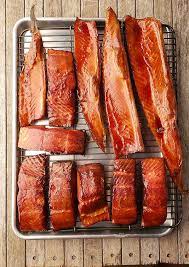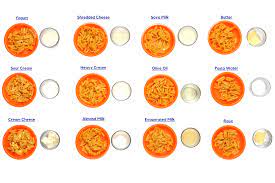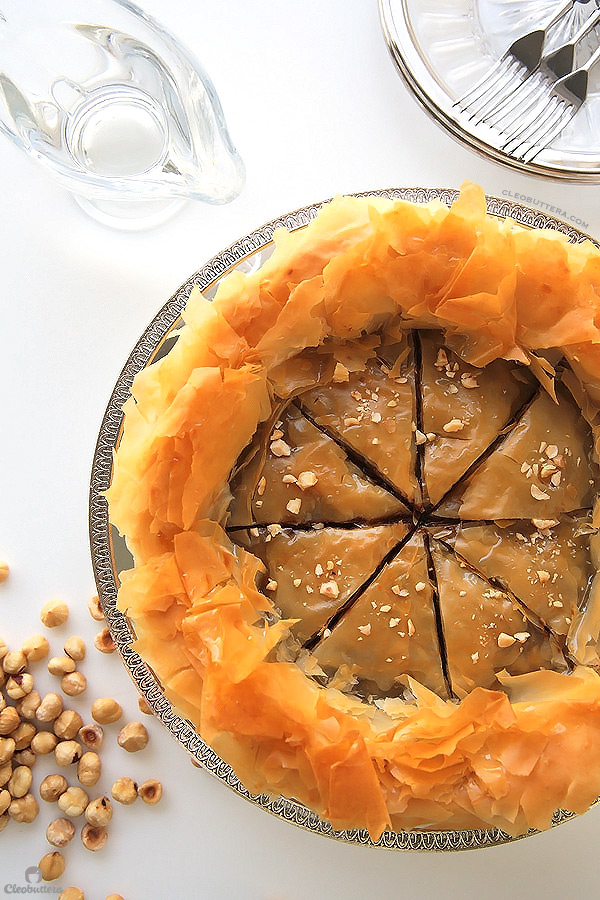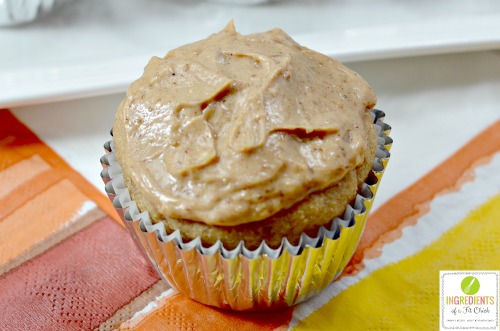Discover the Best Techniques How Long to Smoking Salmon and Achieve the Perfect Flaky Texture and Rich Flavor
Salmon is a delicious and versatile fish that can be prepared in a variety of ways. One popular method of preparation is smoking, which imparts a rich and smoky flavor to the fish. However, smoking salmon requires careful attention to time and temperature in order to achieve the perfect results. In this comprehensive guide, we will explore the ideal time for smoking salmon and provide tips and techniques for ensuring a successful outcome.
Smoking salmon is both a science and an art. The perfect balance of time and temperature is key to achieving the desired taste and texture. Too short of a smoking time can result in undercooked fish, while too long of a smoking time can leave the salmon dry and overcooked. Additionally, the temperature at which the salmon is smoked will affect the final flavor. Therefore, it is important to understand the optimal time and temperature for smoking salmon.
Many factors can influence the smoking time for salmon, including the thickness of the fillets, the type of smoker used, and personal preference. Generally, a good starting point for smoking salmon is around 150-160 degrees Fahrenheit (65-70 degrees Celsius). This temperature allows the fish to cook slowly and evenly, while still retaining its moisture. Depending on the thickness of the fillets, the smoking time can range from 1 to 4 hours.
It is important to monitor the internal temperature of the salmon throughout the smoking process to ensure that it reaches a safe minimum internal temperature of 145 degrees Fahrenheit (63 degrees Celsius). This will ensure that the salmon is fully cooked and safe to eat. Using a meat thermometer is the most accurate way to check the internal temperature of the fish.
In conclusion, finding the perfect time for smoking salmon requires a combination of knowledge and experimentation. By understanding the ideal time and temperature, and monitoring the internal temperature of the fish, you can achieve delicious and perfectly smoked salmon every time. So grab your smoker, prepare your salmon, and get ready to enjoy a culinary delight that will impress your family and friends.
The Best Time to Smoke Salmon: An In-depth Guide
Smoking salmon is a culinary tradition that has been practiced for centuries. The process of smoking adds a rich, smoky flavor to the salmon and helps preserve it, making it a popular choice for those looking to savor the taste of this delectable fish. But when is the best time to smoke salmon? In this guide, we will delve into the factors that affect the timing of smoking salmon and provide you with expert tips to ensure perfect results every time.
Factors to Consider
There are several factors to consider when determining the best time to smoke salmon:
- Weather: The weather plays a significant role in the smoking process. Optimal smoking conditions usually include a temperature range of 70-80°F (21-27°C) with low humidity. Avoid smoking salmon on rainy or overly humid days, as it can prevent proper smoke absorption.
- Freshness: The freshness of the salmon is crucial for achieving the best flavor. It is recommended to smoke salmon within a day or two of purchase for optimal results. If you’re smoking frozen salmon, make sure to thaw it completely before proceeding.
- Size and Thickness: The size and thickness of the salmon fillets will impact smoking time. Thinner fillets will require less time to smoke, while thicker ones will need longer. It’s essential to adjust the smoking time accordingly to ensure the salmon is smoked to perfection.
- Brining Time: Prior to smoking, many people choose to brine their salmon to enhance the flavor and texture. Brining time can range from a couple of hours to overnight, depending on your preference. Keep in mind that longer brining times will result in a more pronounced flavor.
Recommended Smoking Times
Based on the factors mentioned above, here are some general guidelines for smoking times:
- For thinner salmon fillets (around 1 inch thick), a smoking time of 1-2 hours at 180-200°F (82-93°C) is usually sufficient.
- Thicker fillets (around 1.5 inches thick) may require 2-3 hours of smoking at the same temperature range.
- If you prefer a stronger smoky flavor, you can extend the smoking time by 30 minutes to an hour.
Remember to check the internal temperature of the salmon using a meat thermometer to ensure it reaches 145°F (63°C) for safe consumption.
With these tips in mind, you are now equipped with the knowledge to determine the best time to smoke salmon. As with any cooking process, practice and experimentation will help you perfect your smoking technique and achieve the desired results. So fire up your smoker, prepare the salmon, and get ready to enjoy a delicious, smoky treat!
Understanding the Smoking Process
Smoking salmon is a time-honored technique that imparts a rich, smoky flavor and delicate texture to the fish. Understanding the smoking process is key to achieving the perfect smoked salmon every time.
How Smoking Works
Smoking involves the slow cooking of food using the smoke generated by burning wood chips or pellets. When the wood burns, it releases flavorful compounds that infuse into the salmon, enhancing its taste and aroma.
The smoking process consists of two main stages: curing and smoking. Curing involves applying a mixture of salt, sugar, and sometimes spices to the salmon. This step not only adds flavor but also helps to remove moisture from the fish, making it easier to smoke.
Once the salmon has been cured, it is ready for the smoking stage. The salmon is placed in a smoker, which is a specialized device designed to generate and control smoke. The wood chips or pellets are ignited, and the smoke begins to envelop the fish, slowly infusing it with smoky flavor.
Types of Smoking
There are two primary methods of smoking salmon: cold smoking and hot smoking.
Cold smoking is done at temperatures between 68°F and 86°F (20°C to 30°C). This method imparts a mild smoky flavor and is typically used for preserving the salmon rather than fully cooking it. Cold-smoked salmon is often silky and less firm compared to its hot-smoked counterpart.
Hot smoking, on the other hand, is done at temperatures between 126°F and 176°F (52°C to 80°C). This method fully cooks the salmon while infusing it with a stronger smoky flavor. Hot-smoked salmon has a firmer texture and is often served as a main dish.
Note: It’s important to follow the recommended smoking temperatures and times to ensure food safety.
Understanding the smoking process is essential for anyone looking to master the art of smoking salmon. By learning about the different methods and stages, you can create delicious smoked salmon that will impress your family and friends.
Choosing the Ideal Salmon
When it comes to smoking salmon, starting with the right fish is essential. Here are a few key factors to consider when choosing the ideal salmon:
- Freshness: Look for salmon that is firm and has a clean, fresh smell. Avoid fish with any signs of discoloration or a strong fishy odor.
- Species: Different species of salmon have distinct flavors and textures. Common types include sockeye, king, coho, and Atlantic salmon. Choose a variety that suits your taste preferences.
- Size: The size of the salmon fillet or whole fish will depend on your smoking method and the number of servings you plan to make. Larger fish are ideal for smoking whole, while smaller fillets are more manageable for individual portions.
- Skin-on or skinless: Consider whether you prefer salmon with the skin on or removed. The skin can add extra flavor and protect the fish during smoking, but some people prefer skinless fillets for easier eating.
- Sustainability: Look for salmon that is sustainably sourced and harvested. Choose wild-caught salmon whenever possible to support environmental conservation efforts.
By taking these factors into consideration, you can ensure that you select the perfect salmon for smoking and achieve the best flavor and texture in your final dish.
Preparing the Brine
Before you can smoke salmon, you need to prepare a brine. A brine is a mixture of water, salt, sugar, and any additional seasonings or aromatics you want to add. The purpose of the brine is to both flavor the salmon and help preserve it during the smoking process.
Here is a simple recipe for a basic brine:
Ingredients:
- 1 gallon of water
- 1 cup of kosher salt
- 1 cup of brown sugar
Instructions:
- In a large pot, heat the water until it reaches a simmer.
- Add the salt and sugar to the water, stirring until they dissolve completely.
- Remove the pot from heat and allow the brine to cool completely. You can speed up the cooling process by placing the pot in an ice bath.
- Once the brine is cool, you can add any additional seasonings or aromatics you desire. Some popular options include garlic, black pepper, dill, or lemon zest.
Make sure to taste the brine before adding the salmon to ensure it has the desired level of flavor. Adjust the salt, sugar, or seasonings as needed.
Note: The salmon should be submerged in the brine during the entire curing process, which usually lasts between 4 and 12 hours depending on the size and thickness of the fillets.
After preparing the brine, you are ready to move on to the next step in the smoking process. Get ready to enjoy some delicious smoked salmon!
Essential Equipment for Smoking
When it comes to smoking salmon, having the right equipment is essential to ensure that you achieve the best results. Here are some key tools you’ll need:
1. Smoker: A smoker is the central piece of equipment for smoking salmon. There are various types available, including charcoal, electric, and propane smokers. Consider your personal preferences and the level of convenience you desire when choosing a smoker.
2. Wood Chips: Wood chips add flavor to the salmon as it smokes. Different types of wood chips can create different flavors, so experiment with options like hickory, apple, or mesquite to find your favorite.
3. Thermometer: Monitoring the temperature is crucial for achieving perfectly smoked salmon. Invest in a good-quality thermometer that can accurately measure the internal temperature of the salmon.
4. Brine Bucket: Brining is an important step in the smoking process, as it helps to enhance the flavor and texture of the salmon. A brine bucket is used to soak the salmon in a flavorful solution before smoking.
5. Salmon Rack: A salmon rack is a convenient accessory that allows you to smoke multiple pieces of salmon at once. It helps to maximize space in the smoker and ensures even smoking of the fish.
6. Aluminum Foil: Aluminum foil is useful for wrapping any smaller pieces of salmon or for creating a makeshift smoker box for wood chips if your smoker doesn’t have its own.
7. Tongs: Tongs are essential for handling the salmon when placing it in and removing it from the smoker. Opt for long tongs to keep your hands at a safe distance from the hot smoker.
8. Basting Brush: A basting brush is useful for applying glazes or additional liquid during the smoking process. Look for a heat-resistant brush with silicone bristles that won’t melt.
9. Fire Starter: Depending on your smoker type, you may need a fire starter or lighter for ignition. Choose a reliable and efficient fire starter to ensure a smooth smoking process.
10. Storage Containers: After smoking the salmon, you’ll need airtight containers to store the leftovers. Glass or plastic containers with tight-fitting lids are ideal for preserving the flavor and freshness of the smoked salmon.
By having these essential equipment pieces on hand, you’ll be well-prepared to embark on your smoking adventure and create delicious smoked salmon every time.
Mastering the Smoking Technique
If you want to take your salmon smoking game to the next level, it’s essential to master the smoking technique. This process requires patience, attention to detail, and a few key steps to get it just right. Here are some tips to help you become a smoking pro:
1. Choosing the Right Wood
The type of wood you use for smoking will greatly impact the flavor of your salmon. Popular choices include alder, apple, oak, and hickory. Experiment with different wood varieties to find your preferred taste.
2. Soaking the Wood Chips
If you’re using wood chips instead of larger wood chunks, it’s crucial to soak them in water for at least 30 minutes before smoking. Soaking helps the chips produce smoke rather than burn quickly, ensuring a slow and steady smoking process.
3. Preparing the Salmon
Before you start smoking, prepare your salmon by removing any bones and scales and patting it dry with paper towels. You can also season the salmon with your favorite spices or a dry rub to enhance the flavor.
4. Controlling the Temperature
Consistent temperature control is essential for smoking salmon. Aim for a temperature range between 200-225°F (93-107°C) to achieve that perfect smoky flavor. Use a thermometer to monitor the temperature and make adjustments as needed.
5. Using the Two-Stage Smoking Method
The two-stage smoking method involves starting the salmon at a lower temperature to infuse it with smoke and then increasing the temperature to cook it. This technique ensures that the fish is properly smoked while remaining tender and moist.
6. Timing is Key
The smoking time will vary depending on the size and thickness of your salmon fillet. As a general rule, plan for approximately 1 hour of smoking time for every inch of thickness. Keep a close eye on the salmon to avoid overcooking.
By following these tips and practicing the smoking technique, you’ll soon be able to produce perfectly smoked salmon that will impress your family and friends. Enjoy the delicious flavors and the satisfaction of mastering this ancient cooking method!
Enjoying Your Perfectly Smoked Salmon
Once you’ve mastered the art of smoking salmon to perfection, it’s time to sit back and enjoy the fruits of your labor. Here are a few tips on how to savor your perfectly smoked salmon:
- Start by admiring the beautiful color and texture of your smoked salmon. The rich pink hue and delicate flakes of the fish are a testament to the smoking process.
- Before taking your first bite, take a moment to appreciate the aroma wafting from the salmon. The smoky, savory scent will make your mouth water in anticipation.
- When it comes to serving, simplicity is key. Let the flavors of the salmon shine by keeping the accompaniments minimal. A squeeze of lemon juice or a dollop of crème fraîche is all you need to complement the smoky goodness.
- For a classic presentation, arrange thin slices of salmon on a platter. Garnish with fresh dill or parsley for a touch of color.
- Don’t forget to pair your smoked salmon with the perfect beverage. A chilled glass of white wine or a refreshing craft beer will enhance the flavors and provide a delightful contrast.
- Whether you’re hosting a gathering or enjoying a quiet meal at home, smoked salmon can be a versatile addition to any menu. Use it as a topping for bagels, a filling for sandwiches, or a standout ingredient in a salad.
- Once you’ve savored your first bite, take your time to fully appreciate each subsequent mouthful. Let the flavors dance on your palate, and savor the delicate smokiness with every bite.
- Finally, don’t forget to share the joy of your perfectly smoked salmon with friends and loved ones. The pleasure of enjoying this culinary masterpiece is best when shared with others.
Now that you know how to savor your perfectly smoked salmon, it’s time to put your newfound knowledge into practice. Gather your ingredients, fire up the smoker, and get ready to experience the deliciousness of homemade smoked salmon.
“FAQ:” How long to smoke salmon
What is the recommended temperature to smoke salmon, and how does it ensure that the salmon reaches the desired level of doneness?
The recommended temperature to smoke salmon is crucial for achieving the desired doneness, typically set to 145°F. This ensures that the salmon is fully cooked and safe to eat.
Can you explain the difference between hot smoked and cold smoked salmon, highlighting how each method contributes to the texture and flavor of the final product?
Hot smoked salmon is cooked at higher temperatures, resulting in a flaky texture. Cold smoked salmon, on the other hand, is cured and smoked at lower temperatures, preserving a silky and moist texture with a distinct flavor.
What are the key steps involved in smoking salmon at home, and how does the smoking time impact the flavor and juiciness of the salmon?
Smoking salmon at home involves brining, air-drying, and then smoking. The smoking time, typically 3-4 hours, plays a crucial role in imparting flavor and ensuring the salmon remains juicy and flavorful.
Could you provide insights into the process of making a smoked salmon dip, and how does it complement the flavor profile of smoked salmon?
Making a smoked salmon dip involves combining smoked salmon with cream cheese and other ingredients. The dip complements the smoky and savory flavor of smoked salmon, creating a delicious and versatile dish.
What are the recommended ways to serve smoked salmon, and how does it pair well with various dishes, such as salads, tacos, or pasta?
Smoked salmon can be served in various ways, including in salads, tacos, or pasta. Its versatility allows it to complement different flavors, adding a smoky and savory element to these dishes.
When smoking salmon, what role does the type of salmon play, and are there specific varieties like king salmon or sockeye salmon that are preferred for smoking?
The type of salmon used for smoking, such as king salmon or sockeye salmon, can impact the final flavor. While personal preferences vary, some may prefer the richness of king salmon, while others enjoy the bold flavor of sockeye salmon.
How does air-drying the salmon before smoking contribute to the overall smoking process, and what tips can ensure a well-dried salmon for smoking?
Air-drying the salmon before smoking helps form a pellicle, enhancing smoke absorption. To achieve this, patting the salmon dry and allowing it to air-dry ensures a well-prepared surface for smoking.
What are some creative ways to use leftover smoked salmon, and how can it be incorporated into different recipes to avoid waste?
Leftover smoked salmon can be utilized in various recipes, such as salads, pasta, or spreads. Its smoky flavor adds depth to dishes, preventing waste and offering a delicious twist to leftovers.
In terms of equipment, how does using an electric smoker impact the smoking process, and what advantages does it offer compared to traditional methods?
Using an electric smoker simplifies the smoking process, providing consistent temperature control. It offers advantages such as ease of use and convenience compared to traditional smoking methods.
Can you share an easy smoked salmon recipe, highlighting the basic steps and ingredients required for someone new to smoking salmon at home?
An easy smoked salmon recipe involves simple steps like brining, air-drying, and smoking. Basic ingredients include salmon, brine, and wood chips, making it accessible for beginners to enjoy homemade smoked salmon. or liquids that may drip from the fish.
How does using a Traeger grill contribute to the overall cooking experience, particularly when smoking salmon?
Using a Traeger grill enhances the cooking experience by providing consistent temperature control and the convenience of wood pellet smoking, adding a distinct flavor to the salmon.
Can you share tips on the best way to place the salmon on a Traeger grill for optimal smoking results, considering factors like temperature and positioning?
Placing the salmon on a Traeger grill involves arranging it on the grates, ensuring proper spacing and exposure to the smoke. Optimal results are achieved by maintaining a controlled temperature and placing the salmon to maximize smoke exposure.
What are the key advantages of using a Traeger grill when aiming to infuse salmon with a rich smoke flavor?
Traeger grills excel at infusing a rich smoke flavor into salmon due to their wood pellet system, providing a consistent and flavorful smoking experience.
How does the Traeger grill contribute to the smokiness of the salmon, and what makes it a popular choice among enthusiasts for smoking various meats, including salmon?
The Traeger grill contributes to the smokiness of salmon through its wood pellet mechanism, allowing users to choose different wood flavors. Its popularity stems from its versatility and ease of use for smoking a variety of meats.
What role does the Traeger grill play in ensuring that the smoke flavor is evenly distributed across the salmon, creating a balanced and flavorful result?
The Traeger grill ensures even distribution of smoke flavor by maintaining a consistent temperature and utilizing the wood pellets efficiently. This contributes to a balanced and flavorful outcome when smoking salmon.
How do you properly remove the salmon from the smoker to ensure it retains its flavor and texture?
To preserve flavor and texture, carefully remove the smoked salmon from the smoker using utensils, avoiding any excessive handling or breaking of the fillet.
What makes for the best smoked salmon, and how does the smoking process contribute to its unique qualities?
The best smoked salmon is achieved through a balanced smoking process that imparts a distinct smoky flavor while maintaining the salmon’s natural moisture and tenderness.
Can you share insights on preparing a side of salmon for smoking, and what considerations should be kept in mind to enhance the overall smoking experience?
Preparing a side of salmon involves proper seasoning and perhaps brining, ensuring even exposure to smoke. Attention to details such as skin side down can enhance the overall smoking experience.
What distinguishes wild salmon in a smoked preparation, and how does its natural quality contribute to the success of smoked salmon recipes?
Wild salmon’s natural richness and flavor contribute to the success of smoked salmon recipes, offering a more robust taste compared to farmed varieties.
Could you provide an easy recipe for smoking salmon, and what are the key steps to follow for those new to the process?
An easy recipe involves seasoning, smoking for 3-4 hours, and monitoring the internal temperature until it reaches 145°F, resulting in a juicy and flavorful smoked salmon.





